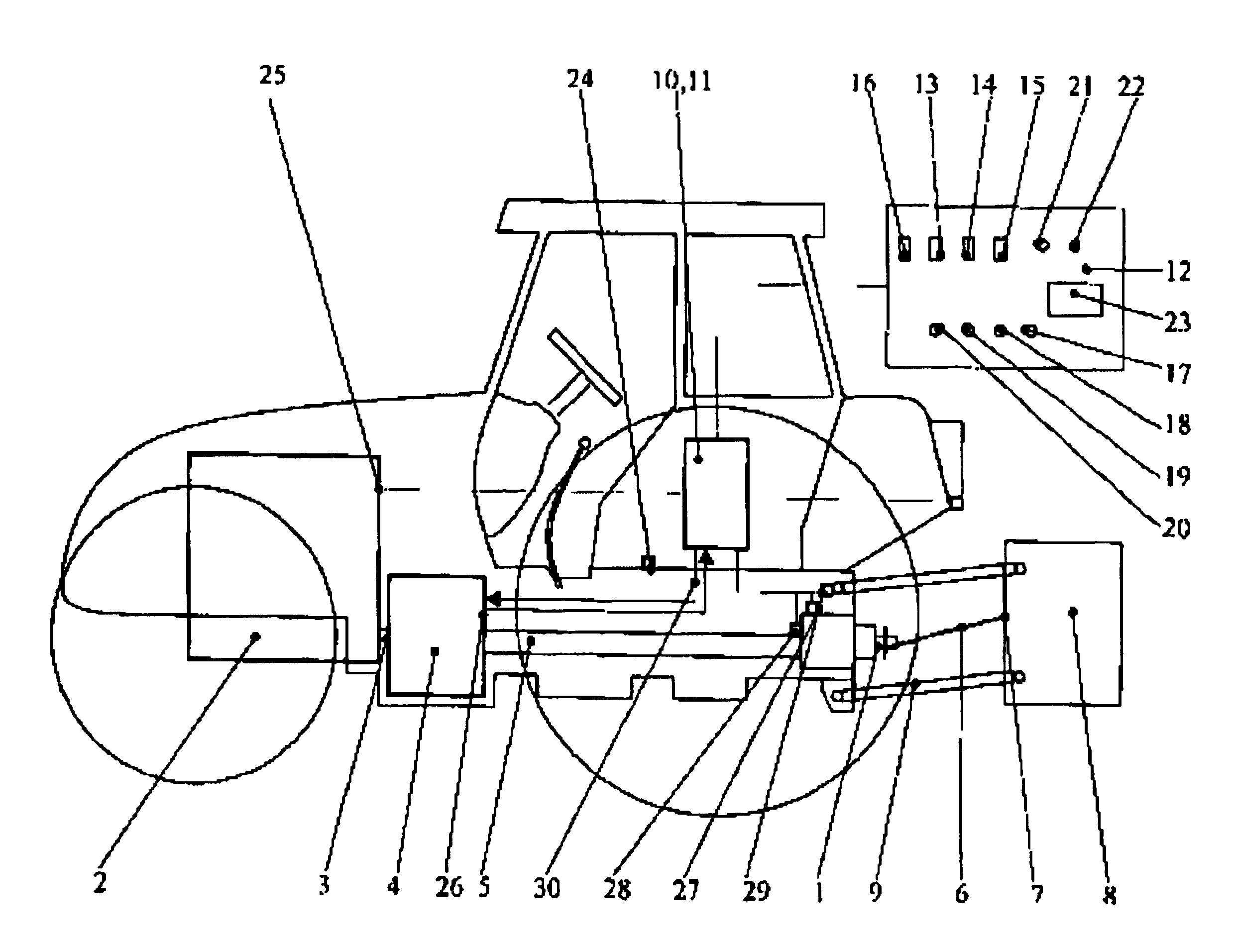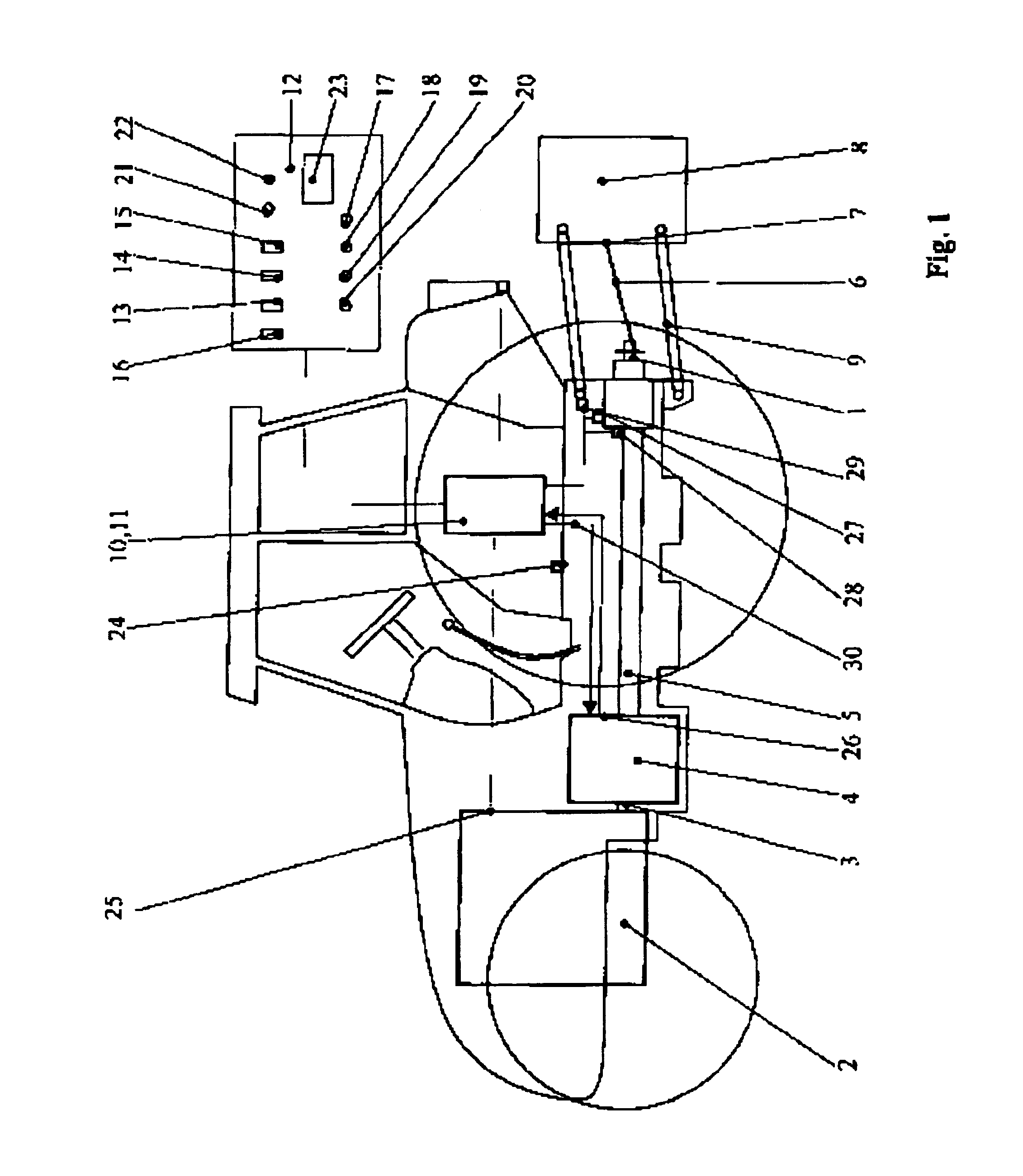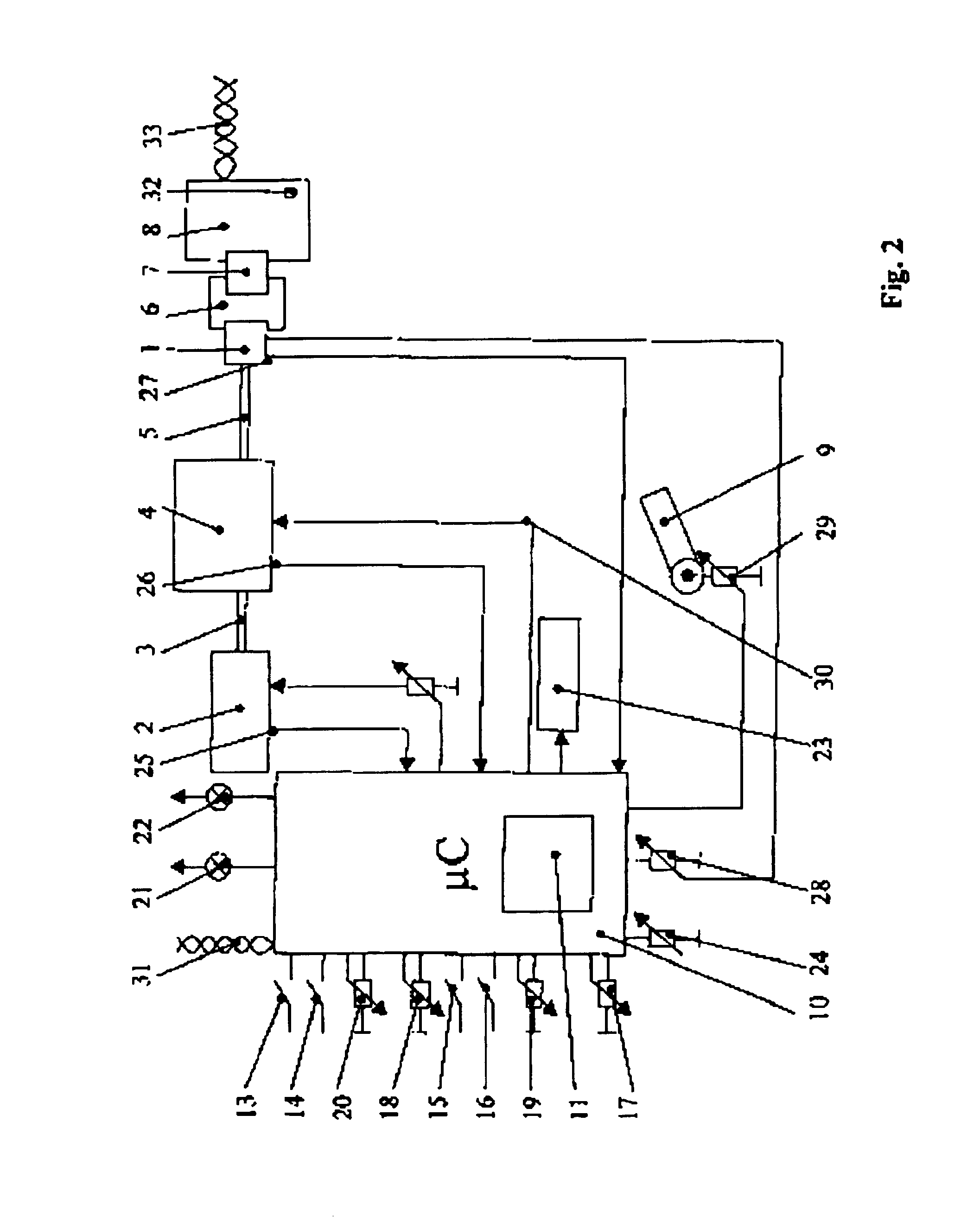Control system for the drive of a pto for an agricultural vehicle
a technology of control system and agricultural vehicle, which is applied in the direction of agricultural machines, thinning machines, transportation and packaging, etc., can solve the problems of limited service life of remaining drive elements and implements, no manual adjustment facility is envisaged, and no effect of high power uptak
- Summary
- Abstract
- Description
- Claims
- Application Information
AI Technical Summary
Benefits of technology
Problems solved by technology
Method used
Image
Examples
Embodiment Construction
[0041]In FIG. 1 are to be seen in the side view of the left side of the tractor, viewed in the direction of travel, the drive train for driving the pto (1), which starts out from the engine (2) and is connected to the CVT transmission (4) via a shaft (3). With this CVT transmission (4) it concerns a continuously variably operating transmission. The drive train continues through an intermediate shaft (5) up to pto of the tractor. On the pto at one end a drive shaft (6) is attached, which is connected at its other end to drive the pto stub (7) of an implement (8) built onto the tractor, which in this example is suspended on the lift (9) at the rear of the tractor.
[0042]An important component for the control system for the drive of the pto (1) is a control device (10), in which a processor (11) is installed for processing a multitude of input signals and for passing on output signals to the CVT transmission (4). A part of the input signals comes from the control and display unit (12) w...
PUM
 Login to View More
Login to View More Abstract
Description
Claims
Application Information
 Login to View More
Login to View More - R&D
- Intellectual Property
- Life Sciences
- Materials
- Tech Scout
- Unparalleled Data Quality
- Higher Quality Content
- 60% Fewer Hallucinations
Browse by: Latest US Patents, China's latest patents, Technical Efficacy Thesaurus, Application Domain, Technology Topic, Popular Technical Reports.
© 2025 PatSnap. All rights reserved.Legal|Privacy policy|Modern Slavery Act Transparency Statement|Sitemap|About US| Contact US: help@patsnap.com



